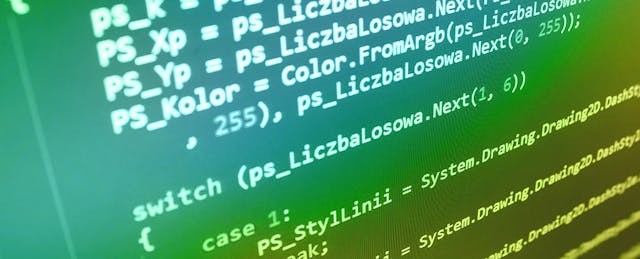AP Computer Science is getting a facelift—or rather, an entirely new face.
The College Board has announced that this fall it will launch a new Advanced Placement course in computer science: AP Computer Science Principles, a program that the organization hopes will engage more females and students of color in computer science.
Back in 1988, the College Board offered high schools two options for AP computer science courses: AP Computer Science A, which covered one college semester’s worth of learning a programming language (first Pascal, then C++ and now Java), and AP Computer Science AB, which covered two semesters. However, only AP Computer Science A attracted students; AB, on the other hand, failed to hit the same numbers.
Additionally, despite its popularity, data has shown some major disparities in AP Computer Science A test-takers. In 2013, no females took the exam in Mississippi, Montana, and Wyoming, and 11 states had no black students engage in the exam. And the stats haven’t really improved—2015 saw 10 states without a single black AP Computer Science student.
According to Trevor Packer, head of the Advanced Placement Program, computer science can be intimidating for the average high school student. In looking at how few students took the AB course, and through conversations with teachers over the years, Packer and his team realized that students “needed more of a gentle introduction” to computer science.
How AP Computer Science Principles Is Different
The interest in tech-related AP courses has skyrocketed, even with Computer Science AB being cancelled as a course option in 2009. (“Over the past decade, the average AP exam has doubled in enrollment, but in Computer Science A, it’s quadrupled,” Packer says.) From 2014 onward, he and his team endeavored to work with teachers to create a course that focused less on a particular language like Java, and more on general computing concepts, like algorithms and variables.
The result—AP Computer Science Principles—is “designed to meet students where they are, getting them to use algorithms and data, and enhance their own passion in computer science,” Packer says, adding that the differences in the Computer Science A and Principles courses mirror “the difference between an advanced in German grammar and a course in German history and culture.”
While students in AP Computer Science A work to debug and analyze Java code, engaging in one 3-hour multiple choice exam at the end of the year, Principles is much more conceptual and project-based. For example, students learn more about abstraction, creating computational artifacts, and the global impact of the internet, as outlined in the course description.
Additionally, students aren’t just proving their knowledge in a multiple-choice exam. During the year, students work on projects—creating “a computer science innovation that’s related to their interest,” reports Maureen Reyes, senior director for the AP Program—and eventually move onto physically building an application in code. Students do take a short exam at the end of the year on topics including data security and ethics, but their projects and applications make up the largest component of their grade.
“They’re essentially submitting a digital portfolio anytime before April 30, like submitting an art portfolio for AP Studio Art,” Packer adds. “As part of submitting that artifact they’ve created, they’re completing written explanations of how they’ve solved that problem.”
Will Colleges Accept AP Computer Science Principles for Credit?
The Advanced Placement team has piloted the course for the last three years in 45 high schools across the country. So far, 1500 teachers have been trained on creating a Computer Science Principles syllabus for the fall of 2016. It’ll be the largest debut of an AP ever in the history of the College Board, with nearly 50 percent more teachers launching the program than the previous crown-holder: the AP World History exam, which had 998 teachers in its first year.
But will colleges and universities give students credit for the new course? Maureen Reyes reports that the team requires universities to secure policies around credit (such as which university class the Principles credit would count for) before listing them as an official institution, but so far, she’s collected policies from at least 100 institutions. “They keep rolling in every day,” she says.
And those credit policies can’t come soon enough, Packer adds.
“There are over 67,000 open computing jobs in state of California, but only 3,500 computer science graduates from higher education,” Packer says. “We can’t wait anymore.”


